#but just in case
Text
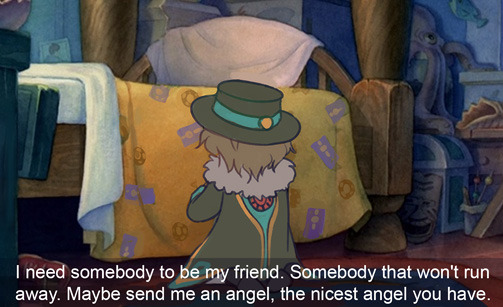
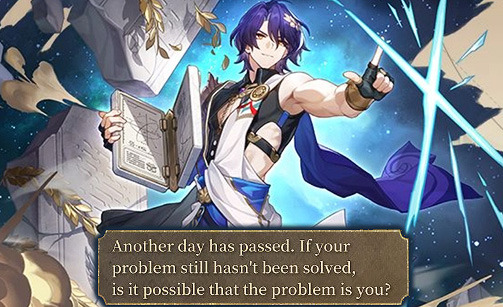
#honkai star rail#my stuff#dr ratio#aventurine#is it spoilers?#I don't think so#but just in case#hsr 2.1 spoilers#hsr 2.1#hsr spoilers
2K notes
·
View notes
Text
Can't stop thinking about how it's Horatio and not Hamlet who is in both the first and last scene. This is the story of Hamlet, but somehow the play begins and ends with Horatio, because even though it's about Hamlet, it's not actually his story. These are the things Horatio has witnessed - the things we as the audience have witnessed alongside him - and he is going to "speak to the yet unknowing world [h]ow these things came about" (Hamlet, 5.2.364-365). We start with Horatio witnessing the appearance of the ghost and we end with him surrounded by the dead, vowing to tell their stories.
#horatio hamlet#hamlet#shakespeare#horatio#someone has probably said this before#but just in case#pj.txt
4K notes
·
View notes
Text
Was talking with a friend yesterday about the latest episode and...

That explains so much about why Liam and Sam are best friends. 😂
#opposites attract#critical role#cr3#liam o'brien#sam riegel#i don't think this counts as a spoiler#but just in case#critical role spoilers#cr spoilers#cr3e91#c3e91
177 notes
·
View notes
Text

Transition goals
#dungeon meshi#< I mean not really#but just in case#it's from chapter 31.5 in case anyone is wondering
239 notes
·
View notes
Text
You know how before Jason died he had started to get kind of violent and Bruce started to feel like he wasn’t being a good enough parent.
Will I’ve been thinking about it for awhile now as I reflect on my experience with healing and trauma. Even though I’m not proud of it for time when I would end up in situations like the one that traumatized me I would get angry and respond in a kind of violent way. But that’s just part of my healing journey and feel that it was probably part of Jason too.
When Jason was with living Bruce Jason’s brain felt safe enough to process the emotions that it hadn’t because of the traumatic circumstances. So when he started to become violent it was just an unfortunate side effect of his processing of these feelings and a sign that he was healing. Bruce and Alfred take these as signs that they were not doing enough for Jason. When in reality it was a sign that were helping Jason heal.
#dc#batfam#jason todd#batfamily#batman#mental health#damian wayne#sorry for being depressing#sorry for a long post#but just in case#don’t let anyone treat you violently just because they’re traumatized#understanding behaviour doesn’t mean excusing it#bruce wayne#crying 😢#batman and robin#red hood#bat family
176 notes
·
View notes
Text

Hands you a worm, hands you a worm, hands you a worm, hands you a
#hydrapple#pokemon#pickle art#picklemon#yotd 2024#pokemon indigo disk#indigo disk spoilers#listen I dunno where any of you are in that dlc#or how slowly you're chugging through it#but just in case
177 notes
·
View notes
Text
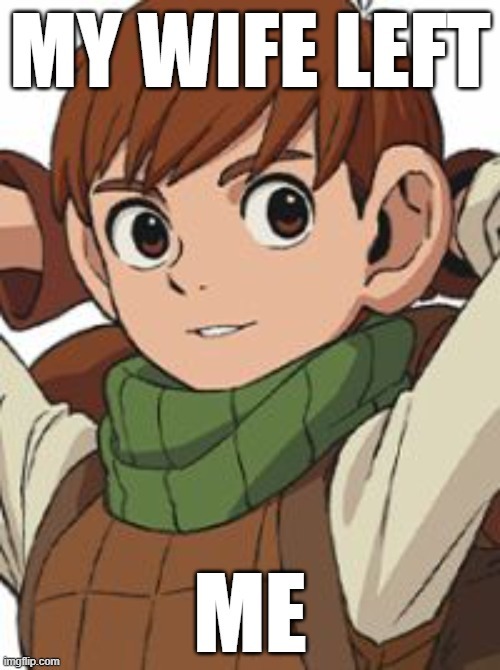
#dungeon meshi#delicious in dungeon#dunmeshi#chilchuck#dunmeshi spoilers#dungeon meshi spoilers#this is really an 'it was his sled' type spoiler#but just in case
147 notes
·
View notes
Text

me if AM ever wipes their ig
165 notes
·
View notes
Text

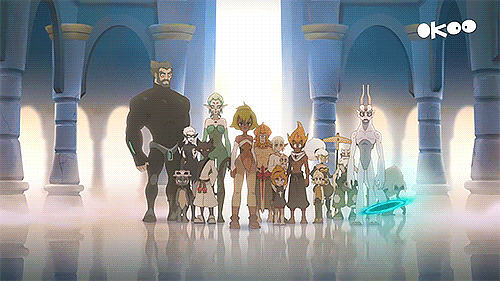
#wakfu#ankama#yugo the eliatrope#wakfu season 4#wakfu s4#i love my son#wakfu spoilers#?#i mean it doesn't show anything#but just in case
145 notes
·
View notes
Text

Beautiful, high res, fine details, unreal render, 4k, 8k, concept art, character design, anime, manga, dragon, fantasy, landscape, castle, mecha, science fiction, robot, woman, female, huge boobs, furry, horror, artstation trending, deviantart trending, cinematic lighting, hyper-realistic, unity, hentai, photorealistic, cyberpunk, octane render, highly detailed, cinematic lighting, ultra-detailed, ultrarealistic, photorealism, full body, dark fantasy, trending on ArtStation, wallpaper, abstract, full hd render, tumblr, artists, artist, art, painting, red, orange, yellow, green, blue, purple, violet, black, grey, white, lighting, fanart, fan art, artist on instagram, pixiv, deviantart, pinterest.
1K notes
·
View notes
Text
How to Have Better Conversations
I’m writing this at the request of my partner. She shared she’s really been struggling with making conversation more than usual lately. I shared some thoughts on how I navigate conversations she found useful and asked if I’d be willing to make a resource or write more about it. This is not meant to be a definitive expert guide, it’s built from my observations and experiences as someone who is autistic and has to navigate a lot of social situations completely manually. This is how I break down the individual components of conversation.
When I spelled this all out, one of her takeaways was that conversations actually involve a lot of microdecisions and that’s why they can be so tiring. And I think that’s totally correct. But I think it’s also why some people can thrive with them because it’s actually a lot of difficult decisions that are tricky to pull off well so when you can and do, there’s a real sense of accomplishment that can make talking more appealing.
I have a feeling this post will be overcomplicated and convoluted to a lot of folks but maybe there’s a handful of folks for whom it is helpful. Take what works, leave the rest. Summary at the end.
Types of Conversation
Topics of conversation are decently important in my experience. They ultimately let you know where the conversation will go - whether it’s likely to end in a dead end, what sorts of things it will allow you to learn about the person you’re discussing with. In my experience, just about all conversation topics fall into one of four camps.
While I talk about Best Use and Don’t Use here - most conversation in the following topics will fall somewhere in-between. They’re just sign posts, not rules.
Me
The focus is on you. Me topics are ultimately about telling a story about yourself with some amount of conscious intent.
Best Use
The best use of this is setting expectations and conveying preferences. This allows your talking about yourself to serve a purpose that ultimately assists the other person in knowing how to understand and interact with you best without necessarily demanding certain treatment front. They might change or not change how they interact with you and this can show how responsive you might expect them to be.
Examples:
“I’m a writer so I don’t work 9-5. If I reply at odd times, that’s probably what’s going on.”
“One of my favorite ways to get to know someone is to grab a hot drink and go for a walk with them.”
Don’t Use
The worst use of this is look a certain way - knowledgeable, impressive, interesting. Basically any use rooted in getting another person to like you. Genuine connection doesn’t start from a place of elevating one person over another. Plus honestly 90% of people just do not care about why you think you’re interesting, important, etc and hate feeling pressured to validate you.
Examples:
“My boss was even stumped by the issue but I figured it out on my own.”
“All my friends say I’m the best at baking.”
“I keep a bunch of tools in my car, I’m ready to fix anything anywhere.”
You
The focus is on the other person. You topics are ultimately about letting the other person share the story of themselves.
Best Use
The best use of You topics is to better understand how a person understands themselves. Open ended questions that invite them to show their thinking as well and shows you how they reason. The common acronym FORD (family, occupation/occupy time, recreation, dreams) is a decent
Example:
“So how did you find yourself in this city? What was that journey like?”
“Why did you take up [your hobby]? What drew you to it?”
Don’t Use
Don’t use you topics to actively try to find fault with someone else. It’s great to have standards and hard no’s for your friendships and relationships. But poking around for them upfront can alienate people who you’d otherwise like - suspicion is not a desirable quality in a friend or potential partner. Ultimately you have to let a person show you who they are and make a personal call. There’s no short cut.
Example:
“So why did you and your ex break up?”
“So you get angry easily then?”
Both
The focus is on a shared expertise/language, not on the story of either of you.
Best Use
The best use of both topics is to notice things about them they wouldn’t think to explicitly share necessarily and to connect in a way that only people with your shared interest or expertise allows.
Example:
My partner and I both have a background in academic medical research. However when we talk about it, it becomes apparent that my focus is on the practical and researcher side and hers is on the data and compliance side. It’s interesting to note where our similar interests compliment and diverge.
Don’t Use
Don’t use both topics to try one up or show you know more than the other person. The minute you do that the shared aspect - and therefore connection - is gone.
Example:
I once went on a date with a man who spent a half hour explaining how GIS systems work in a very “look at me” way after I mentioned I had used them when I was studying forestry in college. It was boring as hell.
Neither
The focus is on a topic without a shared expertise/language, not on the story of either of you.
Best Use
The best use of neither topics is a shared exploration/experience. One person will usually know a little more about a topic than the other person. The person who knows less benefits by learning about a topic they’re curious about. Their questions and observations invite the other to think about this topic in a new light so the experience winds up being somewhat shared.
Examples:
A woman in line at Lowes let me know I could overwinter mums in this area. I proceeded to ask her about how she’d taken such good care of hers and whether the effortwas worth it. She thoughtfully answered my questions and I learned a lot.
I mentioned to my partner a personal project I’m considering undertaking. She asks about my motivations for it and in doing so I have to further clarify them. She learned a little about what my project was about and I learned what I was really after, seeing it fresh.
Don’t Use
Don’t use neither topics to soapbox about things that are of solely personal interest. If someone makes it clear they’re not interested pivot to something more interesting. Even neither topics require at least a little bit of common ground.
Examples:
I regularly talk about group hypocrisies I’m trying to make sense of before realizing that people outside of that group don’t really care.
Ideal Ratio
In general, in reflecting on my own conversations, I think a ratio where more than half the conversation is on either both or neither topics are the most rewarding. It’s where neither party walks away feeling like they talked too much about themselves and when meaningful and interesting topics still have been discussed.
I think it’s a common mistake to try to get the conversation to be 50% you, 50% me. That’s where conversations feel like a job interview and get exhausting real quick. They also have an appearance of depth as people disclose more to keep the conversation going but with out a feeling of connection after because little time is spent on exploration and shared experience.
How to Respond
So knowing what topic you’re currently or want to talk about is one part of this, but the other is choosing a response. I generally let the other person’s response dictate some measure of my response.
Pivot
If someone seems negatively engaged - leaning back, looking around a lot, arms crossed, giving short answers - I pivot to a neutral topic. I find neutral topics work best because the focus is not on either of you - they don’t feel like they’re under pressure to disclose or act interested in you. Neutral topics also allow them to lead the pace - asking questions and making observations at the level they feel comfortable. If they continually seem negatively engaged, it’s usually best to bail from the conversation, especially if asking questions about the dynamic itself seems like it might not be welcome.
Matching
If someone seems neutrally engaged - mostly looking in your direction, not leaning toward or away, giving input on what you’re saying - I match and continue with the topic.
FOOL
Being a little like the Fool in the Major Arcana is actually a great way to be a good conversationalist - genuine, curious, brave, and receptive. Bellow are some concrete ways how.
Follow up questions - Good follow up questions come from a genuine place of curiousity. They also tend to either fill in gaps in your own understanding or encourage the speaker expand the discussion into a new but related area.
Observation - Observations on the topic itself are great but not your only option. You can oberve how a person seemed to feel when talking about the topic. You can observe that they’d touched on a related topic before. Comparison is a fruitful ground for observations as well - “That’s similar to…” and ”That’s very different than….”
Opinion - Offering an opinion or requesting their opinion is a good way to keep a conversation going. In general, it’s best to avoid generalizations, soften them a little to start with, and make sure there is some measure of compassion in the opinion you’re sharing. Rigidity leaves little room for discussion and exploration.
Levity - Where appropriate, make a joke, share a meme, craft a pun, tease them a little. Laughter is a shared experience that connects us.
Building
If someone seems positively engaged - leaning forward, making eye contact, coming closer to you for neurotypical people and actively engaging with the content of what you’re saying regardless of stims or eye contact for neurodivergent folks - I build on what we’re talking about. I self disclose my feelings and personal connections to the topic one step further than what the person I’m talking with has.
It’s important not to disclose a lot more than the person you’re talking with has. It leads to a vulnerability hangover for you and can be quite awkward and uncomfortable for them. If you disclose just a little more than the person you’re chatting with, then it’s much more easy to recover and match their level if they seem uncomfortable with what you shared.
Decision Tree
“What topic are we talking about currently?”
Me - Set expectations, share preferences; you focused
You - Understand you as you understand yourself; other person focused
Both - Connect over a shared language; idea focused
Neither - Connect over a shared exploration; idea focused
“What cues am I getting from the other person?”
If positive, build on current topic - be vulnerable
If neutral, match on current topic - be a FOOL*
If negative, pivot to a different topic - preferably neutral or in ratio**
*FOOL
Follow up questions - genuine curiousity - “I wonder…”
Observe - conversation, feelings, topic - “I noticed…”
Opinion - cautious, concise, compassionate - “I’ve often thought…”
Levity - make jokes, share memes - laughter connects
**Ratio
51% Both/Neither
<49% Me/You
#social anxiety#social skills#conversation#how to#life hacks#I have a feeling this might not be useful#to anyone but me#but just in case#here it is
294 notes
·
View notes
Text

2. 80s slutty jock for @miasmaghoul and @obsidianghoul, thank you for the (absolutely genius) suggestions!!
#image description in alt text#the band ghost#the band ghost fanart#ghost bc#fanart#nameless ghouls#swiss ghoul#ghoul dress up#dress up#dress up swiss#cw suggestive#barely#but just in case
112 notes
·
View notes
Text
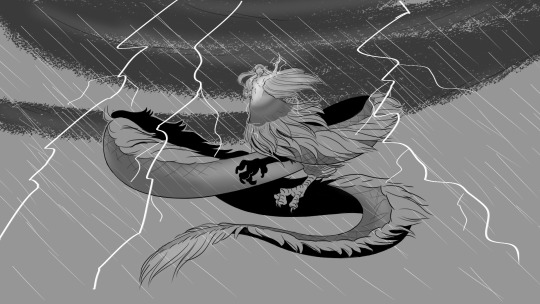
had a dream where marcille was fused with an eastern dragon
#did you know eastern dragons can summon storms and harness lightning#dungeon meshi#dungeon meshi spoilers#kinda but not really#but just in case#delicious in dungeon#marcille donato
91 notes
·
View notes
Text
I know it is okay to dislike characters. Their not real so it won't hurt them. However in terms of Aang and Mai when people say "I like Mai and Aang but hate their writing" I think what they are trying to say is that they like the on-paper potential of these characters. Heck Im a culprit for saying this common phrase. Because I do like the on-paper potential for these two. Many people like the idea of these characters and what they could be. They could have been good characters if their writing was not terrible. I rewrote Mai's arc to be about her and her growth. Aang can be fixed if we remove Nice Guy TM and a whole lot of other things (won't get into that now). However, this could be just my perspective.
#avatar the last airbender#zutara#katara#zuko x katara#zuko#anti kataang#anti aang#anti mai#anti maiko#but like not really#but just in case
91 notes
·
View notes
Photo
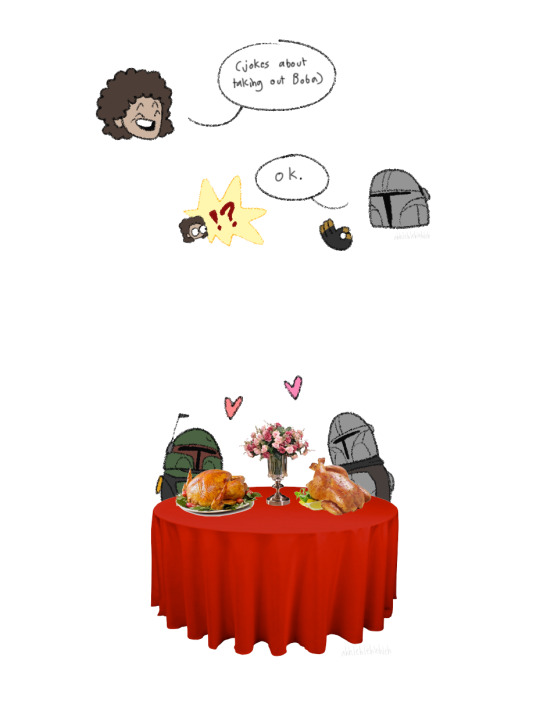

I would like to thank my good friend @choco-banana-crepe for this diamond jewel of a text that made my day.
#the mandalorian#peli motto#din dijarn#boba fett#bobadin#a me doodle#i was running on 5 hour sleep for my 8am to 3pm classes but was in a good mood the entire day and im going to say it was because of the text#and also the nice chat i had with some classmates but mostly that text#i have only watched season 1 of the mandalorian but i look forward to the rest#the mandalorian spoilers#i don't actually know if it is#but just in case
577 notes
·
View notes
Text

#the luggage#discworld#terry pratchett#adoption poll#no tags submitted#no image submitted#i am ridiculously happy whenever someone submits a discworld character#to be clear#we're voting on the character on the left#not any of the others#i mean i'd assume this would be obvious#but just in case#or should i say in luggage?
127 notes
·
View notes